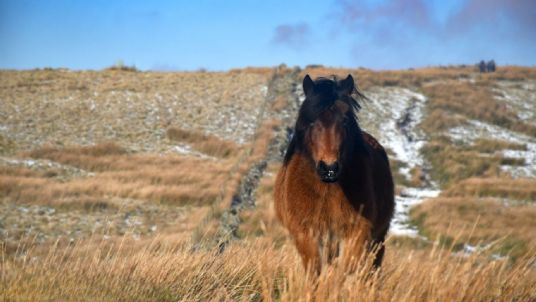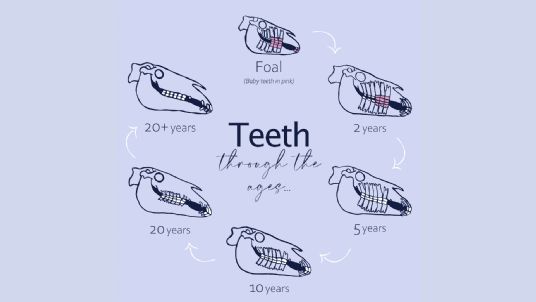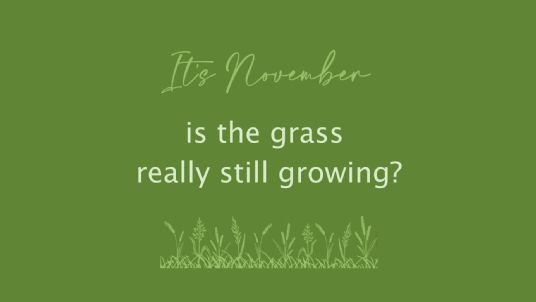Suggestions for hay shortages
18 October 2010
It has certainly been a difficult year for conserving forage. Due to the late, long winter, stocks of hay were used up so there was little if any hay to carry forward to the start of this season. Horses had to be turned on to grass that had not got away sufficiently in the spring, so grazing has been depleted and hay has been needed earlier than usual. Hay crop yields are down due to weather conditions so the total crop this year is less. Straw is also in short supply as, again due to weather conditions, the straw length is less and overall yields are down. Straw is used as forage for some farm animals and is extensively used in chops and compounds, so even though for many of us, straw is not considered suitable for horses, shortages of straw have a knock on effect on the whole availability of forage.
It is vital that our horses have enough forage to eat in order to supply them with enough fibre. In an ideal world, the horse will have access to ad lib forage and will consume a total of 2.5% or more of its body weight in dry matter. This may be a luxury we are no longer able to offer our horses if shortages continue and we do not have access to suitable grazing. However, we should ensure that no horse has less than 2% of its body weight in dry matter. For an average 500kg horse (15.2 riding horse type) this means it will need 10kg of food per day, weight dry before any soaking. We should also ensure that it never goes as long as 4 hours without eating, (2 hours if the horse has ulcers) so our feeding schedule may need adjusting to deliver more but smaller feeds.
Weighing everything will ensure that we are not wasteful of limited resources and also that we are doing the best possible for our horses in the circumstances. We can also try to make a little go a long away – soaking increases volume, small holed hay nets slow down consumption, smaller more frequent feeds spread the feed further. Dividing one feed into two or more bowls in different places also helps to slow down consumption.
Making the most of forage type feeds helps. Increase the Simple System Ltd feeds and the horse will need less hay. Lower feed value feeds are:
• LucieStalks. These require lots of chewing, so a little goes a long way and helps to keep the horse satisfied. Fill a tub and use this instead of the same weight of hay.
• LucieCobs. These soak up to 2.5 times their original volume so they go further than dry feed.
• PuraBeet. Although not technically forage, soaked unmolassed beet pulp is a useful bulk feed and can be fed at 0.5% of body weight – 2.5 kg dry weight for an average horse. This soaks up to make an impressive 2 bucketsful of soaked feed and can easily replace 1 and a half slices of hay.
• RuffStuff. This is very similar to hay and can be used as direct substitute. Chopped feeds have been shown to take longer to eat than long fibre hay.
• MeadowBrix. These compressed blocks of chopped dried grass are fed whole to enable the horse to gnaw on them and are an ideal substitute for grazing. These will soon be available.
Horses that are not such good doers can also have more of the higher nutrient forages. In effect you will be offering manger food and forage in one.
• LucieBrix. Compressed blocks of pure chopped lucerne are fed whole for the horse to gnaw on. Particularly enjoyed by young stock and horses that might other wise start consuming the stable or fencing!
• LuciePellets and Blue Bag Grass Pellets. These are ideal for feeding balls which can offer trickle feeding as well as amusement to the horse. In dry conditions, they can even be thrown around as “scatter bait” to encourage the horse to look for their food.
• JustGrass. Good quality chopped dried grass is a good grazing substitute and particularly enjoyed by Thoroughbred types and can be used as a direct hay replacer weight for weight, although it has a higher fed value than many hays.
It is also possible to hand graze horses in areas that are unsuitable for turnout, at times when turn out is not viable due to ground conditions for instance. Time consuming, this may only be an option at weekends for busy people, but an hour spent grazing is an hour not spent eating hay! Corners of the yard, edges of the drive and even the garden could all be utilised.
We do not suggest using straw as a hay replacer as it has such a low feed value, is prone to fungal infections and the toxins produced from them, has been subject to a multitude of sprays, including very often a desiccant and weed killer within one of week of harvesting. Straw lacks essential vitamins, trace elements and minerals.
Keeping our horses healthy and looking well when conventional forage is in short supply adds to the challenge of horse keeping but there are viable alternatives, especially if we are prepared to think outside the box a little and are prepared to adjust our routines. Edit
Move Up | Move Down
Delete



